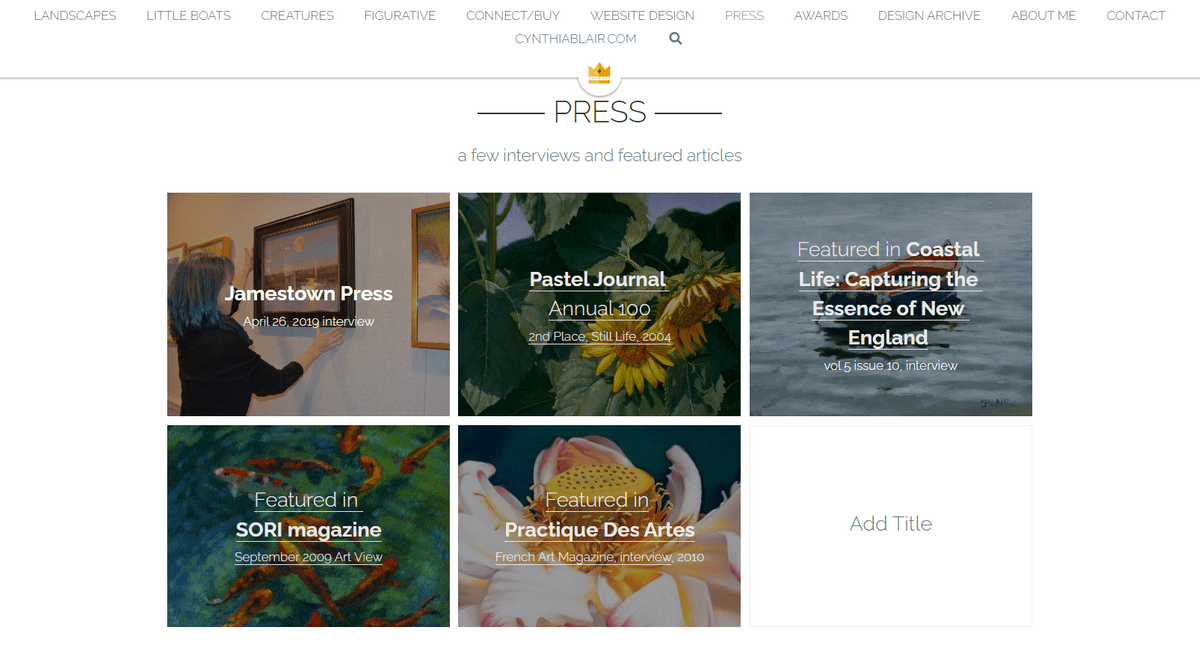Avoid Fake News: 10 Ways To Spot Misinformation
Avoid Fake News: 10 Ways To Spot Misinformation

The prevalence of fake news has become a growing problem that can have serious consequences. Understanding how to spot fake news and avoid falling victim to its misleading narratives is more important than ever. This introduction will explore the alarming rise of fake news, highlight the significance of being able to identify it, and discuss how Strikingly plays a crucial role in combatting this issue.
Fake news has infiltrated our social media feeds, online platforms, and traditional media outlets. It spreads like wildfire, often causing confusion, division, and harm. Delivering false information can manipulate public opinion, undermine trust in reliable sources, and influence important decisions. As technology continues to advance and communication becomes more accessible, the problem of fake news only intensifies.
Why It's Important to Understand How to Spot Fake News
Understanding how to spot fake news is essential for maintaining an informed society. Falling prey to misinformation can lead us down a path of ignorance or even contribute to perpetuating harmful beliefs or actions. By actively seeking accurate information and avoiding fake news, we can protect ourselves from manipulation and make well-informed decisions.
The Role of Strikingly in Combatting Fake News
Strikingly recognizes the importance of combating fake news and promoting media literacy among its users. As a leading website builder platform trusted by millions worldwide, Strikingly understands its responsibility to provide a safe online environment where users can create credible websites that disseminate accurate information. By empowering individuals with the tools they need to develop trustworthy content, Strikingly actively contributes to the fight against misinformation.
1. Evaluate the Source
When navigating the vast sea of information on the internet, evaluating the credibility of a source is crucial in learning how to avoid fake news and misinformation. Here are three key steps to help you determine if a source is reliable:
A. Check the Website's Credibility
When mastering how to avoid fake news, start by examining the website where the news article or information is published. Look for signs of credibility, such as a professional design, a well-established domain, and a clear mission statement. Reputable news outlets and organizations often invest in creating trustworthy online platforms.
B. Examine the Author's Expertise
Next, delve into the author's background and expertise. Check if they have relevant qualifications or experience in the topic they are discussing. Look for their credentials, such as degrees, certifications, or previous work in reputable publications. This will give you an idea of their authority on the subject matter.
C. Look for Biased Language or Agenda
Be vigilant for biased language or hidden agendas within the content. Fake news often relies on sensationalism or skewed narratives to manipulate readers' emotions and beliefs. Pay attention to loaded words, excessive use of adjectives, or one-sided arguments that may indicate a lack of objectivity.
Remember that Strikingly plays a significant role in combatting fake news by providing users with reliable website-building tools that promote transparency and credibility.
By following these steps and utilizing Strikingly's platform to create trustworthy websites, you can effectively identify fake news and easily master how to avoid misinformation.
2. Cross-Verify Facts
Image taken from Nithi Foods
To effectively avoid fake news and misinformation, it is crucial to cross-verify the facts presented in the news articles or sources you come across. Here are some strategies to help you do just that:
A. Use Multiple Reliable Sources
One of the best ways to verify information is by consulting multiple reliable sources. You can better understand the topic by comparing data from different sources and identify any inconsistencies or discrepancies. Look for reputable news outlets or publications known for their accuracy and credibility.
B. Fact-check with Trusted Organizations
Another way to ensure the accuracy of information is by fact-checking with trusted organizations. Several fact-checking websites, such as Snopes or FactCheck.org, specialize in verifying claims made in news articles. These organizations thoroughly investigate claims using reliable sources and evidence, providing an unbiased assessment of the information's validity.
C. Utilize Online Tools for Verification
In addition to consulting multiple sources and fact-checking organizations, online tools are available to help you verify information. Tools like Google Reverse Image Search can help determine if an image has been manipulated or used out of context. Similarly, websites like TinEye can assist in identifying the source of an image.
By utilizing these strategies and tools, you can effectively cross-verify facts and ensure accurate and reliable information you encounter.
3. Analyze the Headline
Analyzing the headline is a crucial step when mastering how to avoid fake news and misinformation. By scrutinizing sensationalized or clickbait headlines, verifying that the story matches the headline, and being wary of misleading or incomplete headlines, you can better navigate through the sea of information online.
A. Scrutinize Sensationalized or Clickbait Headlines
One way to identify fake news is by scrutinizing sensationalized or clickbait headlines. These attention-grabbing headlines often use exaggerated language or bold claims to lure readers in. If a headline seems too sensational or too good to be true, it's essential to delve deeper and verify the source's credibility before believing or sharing the story.
B. Verify the Story Matches the Headline
Another important aspect of analyzing a headline is verifying that the story matches what is promised. Misleading headlines can distort facts or misrepresent information, leading readers to draw incorrect conclusions. Before accepting a headline at face value, take a few moments to read through the article and ensure that it aligns with what was promised in the headline.
C. Beware of Misleading or Incomplete Headlines
Misleading or incomplete headlines can be another red flag for fake news. Some articles may intentionally leave out crucial information in their headlines, creating a distorted narrative that misleads readers. Be cautious when encountering such headlines and dig deeper into the content to get a complete story picture.
Remember, Strikingly is essential in combatting fake news by providing users with tools and resources to create credible websites that promote accurate information.
4. Examine the Content
Image taken from Amy Chambers
Understanding how to avoid misinformation is crucial to sift through the content. Here are three essential factors to consider:
A. Assess the Quality of Writing and Grammar
One clue that can help you spot fake news is the quality of writing and grammar used in the article or post. Legitimate news sources typically have professional editors who ensure that their content is well-written and free from grammatical errors. On the other hand, fake news articles often contain spelling mistakes, poor sentence structure, or awkward phrasing. If you encounter a report with numerous grammatical errors or poorly constructed sentences, it's a red flag that the information may need to be more reliable.
B. Watch out for Excessive Advertisements
Another sign that a piece of content may be spreading fake news is the presence of excessive advertisements. Fake news websites often generate revenue through advertising clicks rather than providing accurate information. As a result, these sites tend to bombard readers with numerous ads that can be distracting and overwhelming. Legitimate news sources usually have a more balanced approach to advertisements, so if you are constantly bombarded with pop-ups or flashy ads while reading an article, it's best to be skeptical about its credibility.
C. Beware of Unsupported Claims or Wild Conspiracy Theories
Fake news articles often make unsupported claims or promote wild conspiracy theories without providing credible evidence or sources to back them up. When examining the content, consider whether proper citations and references are provided for any claims made in the article. Legitimate news sources rely on verified facts and evidence-based reporting rather than baseless speculation or sensationalism. If a piece makes extraordinary claims without reliable sources or evidence, it will likely spread misinformation.
By carefully assessing the quality of writing and grammar, watching out for excessive advertisements, and being wary of unsupported claims or wild conspiracy theories, you can better navigate the vast sea of information and identify fake news.
5. Check the Date
Image taken from Email Handyman
In the rapidly evolving news cycle era, ensuring that your news is current and relevant is crucial. Outdated information can quickly resurface and mislead readers. You can easily avoid fake news by checking the date of an article or news piece.
A. Ensure the News is Current and Relevant
When encountering a news article, take note of the publication date. If it is an ongoing event or topic, ensure the information provided is recent and up-to-date. Avoid sharing outdated news that may be inaccurate or reflect the current situation.
B. Look for Updates or Corrections
Reputable news sources often provide updates or corrections to their articles as new information emerges. Before accepting a piece of news as accurate, check if there have been any subsequent updates or revisions that may alter its context or meaning.
C. Be Wary of Outdated Information Resurfacing
Misinformation can sometimes resurface on social media platforms or other websites long after it has been debunked or proven false. Be cautious when encountering old articles being shared as if they were recent news. Always verify the credibility and relevance of the information before accepting it as accurate.
Remember, staying vigilant about checking dates helps you avoid fake news and ensures that you are well-informed about current events.
As we continue exploring how to spot fake news and avoid misinformation, let's move on to analyzing another essential aspect: assessing supporting evidence.
6. Assess the Supporting Evidence
Image taken from Cynthia Blair
A. Look for Reliable Sources and Citations
When evaluating the credibility of a news article, it is crucial to look for reliable sources and citations. Trustworthy news outlets often cite their sources and provide links to additional information. This allows readers to verify the accuracy of the information presented and ensures transparency. Strikingly, as a platform committed to combating fake news, encourages its users to include proper citations and references in their articles, enhancing their credibility.
B. Verify Quotes and Statistics
Quotes and statistics are commonly used in news articles to support claims or provide evidence. It is essential to verify the accuracy of these quotes and statistics by cross-referencing them with reputable sources or conducting independent research. Strikingly emphasizes the importance of fact-checking such information before publishing it on their platform, ensuring users provide accurate data.
C. Be Skeptical of Unverifiable Anonymous Sources
Anonymous sources can be a red flag when assessing the reliability of a news article. While there may be legitimate reasons for protecting someone's identity, it is crucial to approach such information with skepticism. Strikingly encourages its users to avoid fake news as well as relying solely on unverifiable anonymous sources when creating content on their platform, promoting responsible journalism practices.
7. Consider the Tone and Language
Image taken from Paul Zheng
To effectively identify and avoid fake news, it is crucial to consider the tone and language used in news articles or reports. By paying attention to these aspects, you can better assess the credibility and objectivity of the information presented.
A. Watch out for Emotional Manipulation
When reading news articles, be cautious of emotional manipulation tactics employed by some sources. Sensationalized language or exaggerated claims can evoke strong emotions and sway your opinion. If a piece seems overly dramatic or tries to elicit a specific emotional response, it may indicate a need for more reliable information.
B. Beware of Overly Polarizing or Provocative Language
Another red flag when identifying fake news is the use of overly polarizing or provocative language. News outlets consistently using extreme language or paint issues in black-and-white terms may have an agenda beyond objective reporting. Look for sources that strive for balance and present multiple perspectives.
C. Evaluate the Balance and Objectivity of Reporting
Assessing the balance and objectivity of reporting is essential in mastering how to avoid misinformation. Reliable news sources present information fairly without favoring one side over another. Look for articles that provide evidence from various sources, include diverse viewpoints, and only make sweeping generalizations with proper evidence.
By considering the tone and language used in news articles, you can better discern between reliable information and fake news designed to manipulate opinions.
8. Review the Comments and Engagement
When identifying fake news, it's essential to evaluate the content itself and the comments and engagement surrounding it. Here are some key factors to consider:
A. Assess the Quality and Relevance of User Comments
Look closely at the comments section of an article or social media post. Assess the quality and relevance of these user comments concerning the content. Genuine discussions often include thoughtful insights, questions, or constructive criticism. On the other hand, if you come across many generic or irrelevant comments, it could be a sign that something is incorrect.
B. Look for Trolls or Bots Manipulating Discussions
Unfortunately, online platforms are often filled with trolls or bots whose primary purpose is manipulating discussions and spreading misinformation. Watch for suspicious accounts that repeatedly post inflammatory or off-topic comments. These trolls aim to divert attention from genuine conversations and create chaos within comment sections.
C. Consider the Volume and Nature of Social Media Shares
Social media shares can give you a sense of how widely an article or post is being circulated. However, quantity alone doesn't guarantee credibility. Pay attention to the nature of these shares as well. If you notice that specific posts are predominantly shared by unreliable sources or individuals known for spreading misinformation, it's a red flag that calls for further scrutiny.
Remember, Strikingly is crucial in combatting fake news by providing users with reliable website-building tools and resources that promote accurate information sharing.
9. Trust Your Gut Instinct
Image taken from For Many Reasons
In the era of fake news and misinformation, it is crucial to trust your gut instinct when consuming and sharing information. You can avoid fake news by being mindful of your biases, listening to your intuition if something feels off, and taking a step back to analyze before sharing.
A. Be Mindful of Your Own Biases
It's important to acknowledge that we all have biases that can influence our perception of information. Whether it's political leanings, personal beliefs, or cultural background, these biases can cloud our judgment and make us susceptible to misinformation. By being aware of our preferences, we can approach news more critically and seek diverse perspectives.
B. Listen to Your Intuition if Something Feels Off
Sometimes, our intuition can be a powerful tool in detecting fake news. Trust your instincts if something seems too good or doesn't align with what you know to be true. Our subconscious mind often picks up on inconsistencies or red flags that may not be immediately apparent. If a news story raises doubts or triggers skepticism within you, it's worth investigating further before accepting it as truth.
C. Take a Step Back and Analyze Before Sharing
In the age of social media, where information spreads rapidly, it is crucial to take a moment before hitting the share button. Pause and reflect on the source's credibility, the content's accuracy, and the potential consequences of sharing misinformation. By taking this step back and analyzing the information critically, you can play an active role in preventing the spread of fake news.
Remember that Strikingly is committed to helping you understand how to avoid misinformation and providing a platform for accurate and trustworthy information. Following the tips outlined in this guide can empower you to avoid fake news and contribute to a more informed society.
10. Stay Informed and Educated
It is crucial to continuously improve your media literacy skills to avoid fake news and misinformation. You can easily navigate the vast sea of information and make well-informed decisions by staying informed and educated.
A. Continuously Improve Your Media Literacy Skills
To effectively avoid fake news, continuously improving your media literacy skills is essential. This involves developing critical thinking abilities and honing your ability to evaluate the credibility of sources. You can better discern reliable information from falsehoods by being aware of common tactics used by misinformation peddlers, such as clickbait headlines or emotionally manipulative language.
B. Follow Trusted News Outlets and Fact-Checking Organizations
One of the most effective ways to stay informed and combat fake news is by following trusted news outlets and fact-checking organizations. These reputable sources employ professional journalists who adhere to ethical reporting standards and fact-check claims before publishing them. By relying on these credible sources for information, you can significantly reduce the risk of being misled by false or misleading stories.
C. Share Reliable Information to Combat Misinformation
Another critical aspect of staying informed is actively learning how to avoid misinformation by sharing reliable information. When you come across accurate news articles or fact-checked reports, share them with your friends, family, and social media networks. Doing so contributes to a more informed society where truth prevails over falsehoods.
Build a Reliable Website With Strikingly Now!
Image taken from Emily Penn
Empowering yourself with the necessary skills to avoid fake news and misinformation is crucial. You can confidently identify and avoid misleading information by following the outlined steps. Strikingly recognizes the importance of combating fake news and is committed to providing a platform that promotes accurate and trustworthy information.
To avoid fake news, constantly evaluate the credibility of the source, cross-verify facts using multiple reliable sources and fact-checking organizations, analyze headlines for sensationalism or clickbait, examine the content for quality and unsupported claims, check the date for relevancy, assess supporting evidence and language tone, review comments and engagement for relevance and authenticity, trust your gut instinct if something feels off, stay informed by continuously improving your media literacy skills, follow trusted news outlets and fact-checking organizations, and share reliable information to combat misinformation.
By taking these steps, you can become an advocate for accurate and trustworthy information in a world filled with fake news. Strikingly shares this commitment by providing a platform supporting content creation and dissemination. Together, we can make a difference in combating misinformation.
Want to create an awesome website that the online community loves? Chat with us today!







